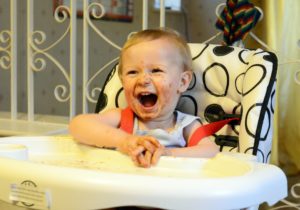Autism In Kids
Autism affects a child’s development and is often detected by the time the child reaches the age of three. It does not discriminate; children all over the world, regardless of their race, age and overall health, are susceptible to it. Though children have seen improvements and benefited from therapy, it is still considered permanent as it is something that they carry into their adulthood.
What Is Autism?
Autism spectrum disorder, or autism as it is known, is a neurological disability that mainly affects the communication skills, social skills and overall behavior of an individual. The condition is called a spectrum disorder as the symptoms may vary from mild to severe.
The inability of a person to socialize and communicate frequently affects their daily lives.
How Common Is Autism In Kids?
In Asia, Europe, and North America together, the average prevalence for childhood autism is 1-2 percent, i.e., one to two babies per 100, according to the US Center for Disease Control (CDC). In boys, autism is almost five times more likely than girls to occur. The condition may affect any ethnicity, nationality, and socio-economic groups of infants.
Causes Of Autism In Kids:
The causes of autism are not known; they may be combined by a single factor and may vary from individual to individual. Several decades of research, however, suggest the following:
1. Anomalies in genetics:
A single mutation can cause ASD in more than 100 genes of different chromosomes. Autism people have various mutations and a combination of several specific mutations can also lead to autism. Autism.
2. Environmental factors:
Some people with genetically modified autism may not show autism / develop it. However, genetic mutations may eventually lead to autism with particular environmental factors such as infections and chemicals. That said, even after exposure to harmful environmental conditions, autism with autism genes can not develop because of their unpredictability.
3. Sporadic causes:
Autism may also develop spontaneously if the infant has neurological disorders, brain tissue overgrowth, faulty metabolism, and autoimmune diseases. Sometimes, autism may coexist with other disorders such as Down’s syndrome and Fragile X syndrome.
Faulty genes are frequently cited as the primary reason for infant autism development.
What increases the risk of autism by prenatal factors?
More than 50 prenatal factors affect the susceptibility to autism. The most noteworthy are the following
- Gestational diabetes
- Bleeding during pregnancy
- Infections with uterine while pregnant
- Side effects of medication during pregnancy
- High maternal age at birth
- The baby is the firstborn
The factors mentioned above do not involve autism at birth, but merely increase the condition’s risk. The presence of one or more of the conditions mentioned above does not necessarily lead to autism.
Signs of Autism in Kids:
Autism signs are progressive and vary depending on the age of the baby. Before the baby is a year old, the early signs of autism may appear. Here are the signs of childhood autism
- Your child won’t try to babble or coo
- Don’t try to respond or imitate the sounds you make when you talk to your child.
- Does not start experimenting with gestures and pointing to the media
- Does not want to learn to hold new objects by trying to capture them?
- Doesn’t like it when anyone sees his eyes straight and even goes so far as to avoid eye contact
- Always a lot and stretches hands awkwardly
- Your baby won’t answer his name, no matter how many times you call him
- Displays unusual ways of playing with toys, such as moving his toy car forward and backward, but doing nothing beyond that.
- Do not respond well to new foods, usually when something new is given
- If you discover, for example, you move his toys to another place, your baby will probably throw a tantrum because of that, but you don’t like it when things have changed! Autism – packed children are usually disturbed for a long time.
- They will be extremely reactive and never moderate to various things and situations. Either your child is too enthusiastic about something or is totally disinterested.
Diagnosis Of Autism In Kids:
For autism in infants, the following test procedures are used.
1. History of the family:
If your family already has autism, your baby is more likely to develop the condition. If you already have a child with autism, your child will also be able to be diagnosed with an 18 percent chance; however, if the same doubles are diagnosed, the other one may be also diagnosed with a 95 percent chance.
2. Traits of behavior:
The doctor will look for the signs that indicate he may have autism in the behavior of your baby. How early can autism be detected in a baby? It was found, according to a study, that children who did not have autism and children who were subsequently diagnosed with it had similar behavior during their first year of life. It was only by one year of age that the children started to show behavioral differences.
3. Autism Questionnaire:
A questionnaire called “Modern Checklist for Autism in Toddlers” (M – CHAT) contains 23 questions covering all the various aspects of autism. These include behavioral issues, language delay, and behavioral overall shift.
Experts say that screening for autism does not warrant detection. A baby and toddler’s behavior changes over time and a child diagnosed with autism in childhood may eventually turn out to be normal.
In other words, not 100% accuracy of the M-CHAT. Don’t be afraid if the baby is diagnosed with autism or if it is declared normal but still has unusual characteristics, and don’t shy away.
Treatment Of Autism In Kids:
For autism, there is no cure. Researchers try to find a solution in their early stages to tackle the problem. Autism among infants and children can be managed systematically by helping parents and children better handle the condition.
How To Manage Autism In Kids:
If all the caregivers involved, including parents and doctors, play their parts well, it may become less of a challenge to manage a baby with autism. Here are a couple of ways to manage autism:
1. Parent education:
Parents should understand what autism is and what they can do to better care for their child in order to help the child. Parents can seek guidance and assistance from support groups and organizations providing the necessary resources.
2. Improvement therapies:
A pediatrician may recommend an appropriate therapy for the infant depending on the age of the baby and the extent of the condition. Applied behavioral analysis or ABA is a popular behavioral therapy designed to gradually enforce desirable behavioral and social characteristics in an autistic person.
Discrete Trial Therapy or DTT is also called. Such therapies use a variety of activities to strengthen the child’s desired behavior. For autistic people, ABA is considered to be the most effective of all therapies. Other recommended therapies include Lovaas Therapy, Augmentative, and Alternative Communication or AAC, and Developmental, Individual, Relationship-based or AAC-based therapies.
3. Speech, language, and early educational interventions:
Autism-infants and infants may have learning difficulties, which may interfere with their chances of a normal education. For basic speech skills, a kid may undergo therapy.
4. General precautions:
Toddlers with autism have little respect for their safety and may indulge in behavior that could jeopardize their lives. The best way to prevent accidents is to secure the home and the environment. Simple steps include securing the doors, closing the power outlets, and keeping the baby in sight outdoors. In case the child tends to wander away, the use of GPS devices and identification tags can also be helpful.
The doctor may sometimes prescribe autism medicines. These drugs do not treat the condition but are subject to the symptoms of collateral disorders such as obsessive-compulsive disorder and depression.
However, medication is rarely given to infants and infants. The doctor’s recommended therapy is the best way to help an autistic child.
Prevention Of Autism:
Researchers can understand autism, but all they can do is to follow the basic rules of pregnancy concerning diet, exercise and general lifestyle because they are unable to identify exact causes.
You may be appalled by the diagnosis of autism in your baby. Autism may not be solved permanently, but it can be dealt with. Note that autism is not a disease, but a disability. The right tools and interventions can surmount disabilities so that people can remain at the same level as their peers.
All kids develop at different paces, so don’t worry if your kid grows at a different pace than others. Your child might be a little late to walk or talk, but it is common among many children who grow up without autism. Remember, if your child is diagnosed with autism, it is not a disease, but a disability that you and the other caregivers involved can overcome with love, support, and encouragement.
Also Read: How Influenza Affects Children And Babies













